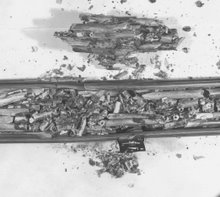GETTING RID OF UHI
All of the nuclear power plants that installed UHI got rid of it, but it took a long time. The nuclear power suppliers, the consultants, and the utility managers got fat, while the workers suffered with the system and the ratepayers paid the bills.
As has been entered a few times in this blog, Leyse pinpointed the risks of UHI in his tragic (for him) memorandum UHI Ultra High Risk, October 3, 1994. Leyse believes that discussions between EPRI-NSAC and Duke staff led Duke to check out its McGuire installations of UHI. Duke then found four out of four level detection systems reverse connected. NSAC overlooked this in a meeting that reviewed PNO’s. Leyse was in that meeting, but upon seeing the Duke PNO he promptly left the meeting and began thinking about what to do next. Leyse wrote more memos. He was on the skids and that is another chapter to come later in more detail.
Of course, more followed and Duke got rid of its UHI systems. However, it was not until July 1987 that UHI was removed from McGuire-2 and November 1987 from McGuire-1. That meant that it took three years for effective action. During those three years, the ratepayers paid for loads of featherbedding activities prior to the removal of the Ultra High Risk. It may be argued that with the extra attention to UHI, the risk was less. Nevertheless, the large gas volumes were in place, armed to attack in the event of relatively minor system failures.
TVA stated up its Sequoyah Units 1 and 2 with UHI in service even though the risks of UHI had been disclosed and UHI was derided (deplored) by the ACRS. TVA finally removed UHI from Sequoyah-1 during March 1990 and from Sequoyah-2 during September 1990. “To prepare for removing the Sequoyah systems, TVA personnel practiced by removing the UHI system at the uncompleted Watts Bar-1,” quote from Nucleonics Week, January 14, 1991. Again, the featherbedders at the NRC, TVA and the reactor plant got fat while the ratepayers covered the expenses and lived with the ultra high risks.
I believe the first reactor to have been stuck with UHI was Kansai Electric Power. On January 14, 1991, Inside NRC reported, “Kansai Electric Power Co. is taking steps to remove its upper head injection (UHI) core spray system at its 1,120-MW Ohi-1 and Ohi-2 to correct plant inefficiencies similar to those at two U. S. utilities with similar reactors.” The reporter also disclosed that Kansai staff visited TVA during September 1990 to review TVA’s experience in removing UHI.
I don’t know when the Kansai’s Ohi units got rid of UHI, but if it was in 1991, that was seven years following my disclosures of October 1984.
Wednesday, June 25, 2008
Subscribe to:
Post Comments (Atom)

No comments:
Post a Comment